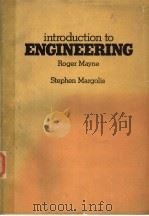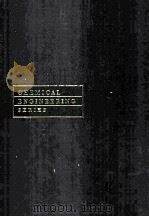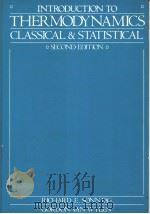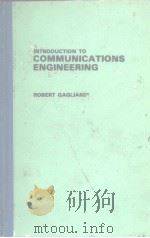《introduction to engineering thermodynamics P617》
| 作者 | 编者 |
|---|---|
| 出版 | 未查询到或未知 |
| 参考页数 | |
| 出版时间 | 没有确切时间的资料 目录预览 |
| ISBN号 | 无 — 求助条款 |
| PDF编号 | 820577408(仅供预览,未存储实际文件) |
| 求助格式 | 扫描PDF(若分多册发行,每次仅能受理1册) |

1SOME INTRODUCTORY COMMENTS1
1.1 The Simple Steam Power Plant,2
1.2 Fuel Cells,4
1.3 The Vapor-Compression Refrigeration Cycle,6
1.4 The Thermoelectric Refrigerator,6
1.5 The Air Separation Plant,8
1.6 The Gas Turbine,9
1.7 The Chemical Rocket Engine,11
1.8 Other Applications and Environmental Issues,12
2SOME CONCEPTS AND DEFINITIONS14
2.1 A Thermodynamic System and the Control Volume,15
2.2 Macroscopic versus Microscopic Point of View,16
2.3 Properties and State of a Substance,17
2.4 Processes and Cycles,18
2.5 Units for Mass, Length, Time, and Force,19
2.6 Energy,21
2.7 Specific Volume and Density,23
2.8 Pressure,25
2.9 Equality of Temperature,31
2.10 The Zeroth Law of Thermodynamics,31
2.11 Temperature Scales,31
Homework Problems,34
3PROPERTIES OF A PURE SUBSTANCE38
3.1 The Pure Substance,39
3.2 Vapor-Liquid-Solid-Phase Equilibrium in a Pure Substance,40
3.3 Independent Properties of a Pure Substance,46
3.4 Tables of Thermodynamic Properties,46
3.5 Thermodynamic Surfaces,53
3.6 The P-V-T Behavior of Low- and Moderate-Density Gases,56
3.7 The Compressibility Factor,57
3.8 Equations of State,62
3.9 Computerized Tables,63
3.10 How-To Section,64
Homework Problems,69
4WORK AND HEAT74
4.1 Definition of Work,75
4.2 Units for Work,76
4.3 Work Done at the Moving Boundary of a Simple Compressible System,77
4.4 Other Systems That Involve Work,86
4.5 Concluding Remarks Regarding Work,88
4.6 Definition of Heat,90
4.7 Heat Transfer Modes,91
4.8 Comparison of Heat and Work,92
4.9 How-To Section,94
Homework Problems,96
5THE FIRST LAW OF THERMODYNAMICS102
5.1 The First Law of Thermodynamics for a Control Mass Undergoing a Cycle,103
5.2 The First Law of Thermodynamics for a Change in State of a Control Mass,104
5.3 Internal Energy—A Thermodynamic Property,110
5.4 Problem Analysis and Solution Technique,111
5.5 The Thermodynamic Property Enthalpy,114
5.6 The Constant-Volume and Constant-Pressure Specific Heats,117
5.7 The Internal Energy, Enthalpy, and Specific Heat of Ideal Gases,119
5.8 The First Law as a Rate Equation,124
5.9 Conservation of Mass,126
5.10 How-To Section,127
Homework Problems,129
6FIRST-LAW ANALYSIS FOR A CONTROL VOLUME138
6.1 Conservation of Mass and the Control Volume,138
6.2 The First Law of Thermodynamics for a Control Volume,141
6.3 The Steady-State Process,144
6.4 Examples of Steady-State Processes,146
6.5 The Transient Process,159
6.6 How-To Section,166
Homework Problems,170
7THE SECOND LAW OF THERMODYNAMICS180
7.1 Heat Engines and Refrigerators,181
7.2 The Second Law of Thermodynamics,186
7.3 The Reversible Process,189
7.4 Factors That Render Processes Irreversible,190
7.5 The Carnot Cycle,193
7.6 Two Propositions Regarding the Efficiency of a Carnot Cycle,195
7.7 The Thermodynamic Temperature Scale,197
7.8 The Ideal-Gas Temperature Scale,197
7.9 Ideal versus Real Machines,201
Homework Problems,206
8ENTROPY211
8.1 The Inequality of Clausius,212
8.2 Entropy—A Property of a System,216
8.3 The Entropy of a Pure Substance,217
8.4 Entropy Change in Reversible Process,219
8.5 The Thermodynamic Property Relation,224
8.6 Entropy Change of a Solid or Liquid,225
8.7 Entropy Change of an Ideal Gas,226
8.8 The Reversible Polytropic Process for an Ideal Gas,230
8.9 Entropy Change of a Control Mass During an Irreversible Process,233
8.10 Entropy Generation,235
8.11 Principle of the Increase of Entropy,237
8.12 Entropy as a Rate Equation,240
8.13 How-To Section,241
Homework Problems,245
9SECOND-LAW ANALYSIS FOR A CONTROL VOLUME254
9.1 The Second Law of Thermodynamics for a Control Volume,254
9.2 The Steady-State Process and the Transient Process,256
9.3 The Steady-State Single Flow Process,263
9.4 Principle of the Increase of Entropy,267
9.5 Efficiency,269
9.6 Available Energy, Reversible Work, and Irreversibility,275
9.7 Availability and Second-Law Efficiency,281
9.8 Some General Comments About Entropy and Chaos,286
9.9 How-To Section,288
Homework Problems,292
10GAS MIXTURES302
10.1 General Considerations and Mixtures of Ideal Gases,302
10.2 A Simplified Model of a Mixture Involving Gases and a Vapor,309
10.3 The First Law Applied to Gas-Vapor Mixtures,312
10.4 The Adiabatic Saturation Process,315
10.5 Wet-Bulb and Dry-Bulb Temperatures,317
10.6 The Psychrometric Chart,318
10.7 How-To Section,319
Homework Problems,323
11POWER AND REFRIGERATION SYSTEMS330
11.1 Introduction to Power Systems,331
11.2 The Rankine Cycle,333
11.3 The Regenerative Cycle,339
11.4 Deviation of Actual Cycles from Ideal Cycles,343
11.5 Cogeneration,347
11.6 Air-Standard Power Cycles,348
11.7 The Brayton Cycle,349
11.8 The Simple Gas-Turbine Cycle with a Regenerator,356
11.9 The Air-Standard Cycle for Jet Propulsion,358
11.10 Reciprocating Engine Power Cycles,360
11.11 The Otto Cycle,362
11.12 The Diesel Cycle,365
11.13 Introduction to Refrigeration Systems,368
11.14 The Vapor-Compression Refrigeration Cycle,369
11.15 Working Fluids for Vapor-Compression Refrigeration Systems,372
11.16 Deviation of the Actual Vapor-Compression Refrigeration Cycle from the Ideal Cycle,372
11.17 The Air-Standard Refrigeration Cycle,375
11.18 Combined-Cycle Power and Refrigeration Systems,378
Homework Problems,382
12CHEMICAL REACTIONS393
12.1 Fuels,394
12.2 The Combustion Process,396
12.3 Enthalpy of Formation,404
12.4 First-Law Analysis of Reacting Systems,406
12.5 Enthalpy of Combustion,410
12.6 Adiabatic Flame Temperature,413
12.7 The Third Law of Thermodynamics and Absolute Entropy,415
12.8 Second-Law Analysis of Reacting Systems,416
12.9 Fuel Cells,419
12.10 Chemical Equilibrium,421
12.11 How-To Section,426
Homework Problems,430
13INTRODUCTION TO HEAT TRANSFER435
13.1 Heat Transfer Modes,435
13.2 Steady One-Dimensional Conduction,440
13.3 Extended Surfaces,450
13.4 Internal Energy Generation,458
13.5 Transient Heat Transfer,460
13.6 Convection Heat Transfer,463
13.7 Electronics Cooling,473
Homework Problems,478
CONTENTS OF APPENDIX487
APPENDIX ASI UNITS: SINGLE-STATE PROPERTIES489
APPENDIX BSI UNITS: THERMODYNAMIC TABLES509
APPENDIX CIDEAL GAS SPECIFIC HEAT555
APPENDIX DEQUATIONS OF STATE557
APPENDIX EFIGURES561
APPENDIX FENGLISH UNIT SUPPLEMENT567
APPENDIX GENGLISH UNIT TABLES577
ANSWERS TO SELECTED PROBLEMS607
INDEX613
《introduction to engineering thermodynamics P617》由于是年代较久的资料都绝版了,几乎不可能购买到实物。如果大家为了学习确实需要,可向博主求助其电子版PDF文件。对合法合规的求助,我会当即受理并将下载地址发送给你。
高度相关资料
-
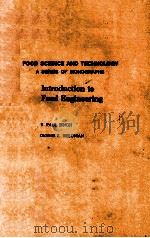
- INTRODUCTION TO FOOD ENGINEERING
- 1984 A P INC.
-
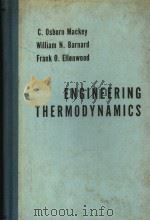
- ENGINEERING THERMODYNAMICS
- NEW YORK JOHN WILEY AND SONS
-
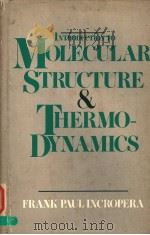
- INTRODUCTION TO MOLECULAR STRUCTURE AND THERMODYNAMICS
- 1974年 JOHN WILEY & SONS
-
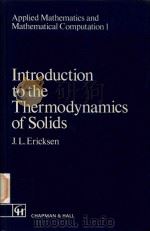
- Introduction to the thermodynamics of solids
- 1991 Chapman & Hall
-
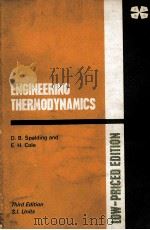
- ENGINEERING THERMODYNAMICS
- 1976 THE ENGLISH LANGUAGE BOOK SOCIETY AND EDWARD ARNOLD (PUBLISHERS) LTD
-

- ENGINEERING THERMODYNAMICS
- 1970 MCGRAW-HILL BOOK COMPANY
-
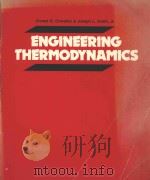
- ENGINEERING THERMODYNAMICS
- 1981 PITAMN
-
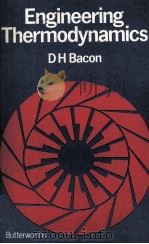
- ENGINEERING THERMODYNAMICS
- 1972 BUTTERWORTH & CO (PUBLISHERS) LTD
-
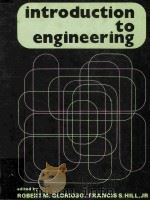
- INTRODUCTION TO ENGINEERING
- 1975 PRENTICE HALL
提示:百度云已更名为百度网盘(百度盘),天翼云盘、微盘下载地址……暂未提供。➥ PDF文字可复制化或转WORD
